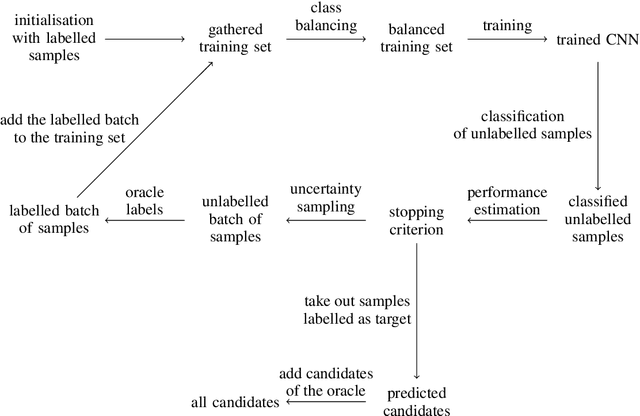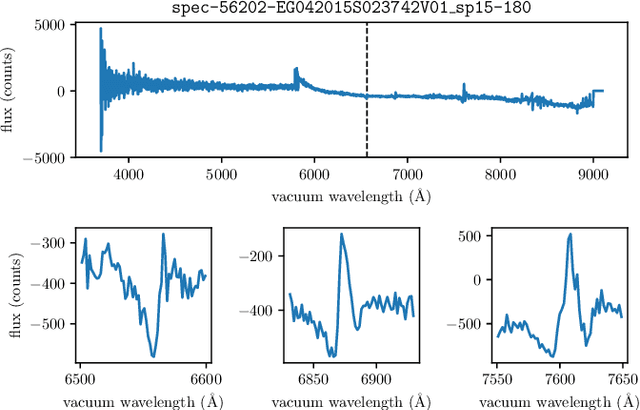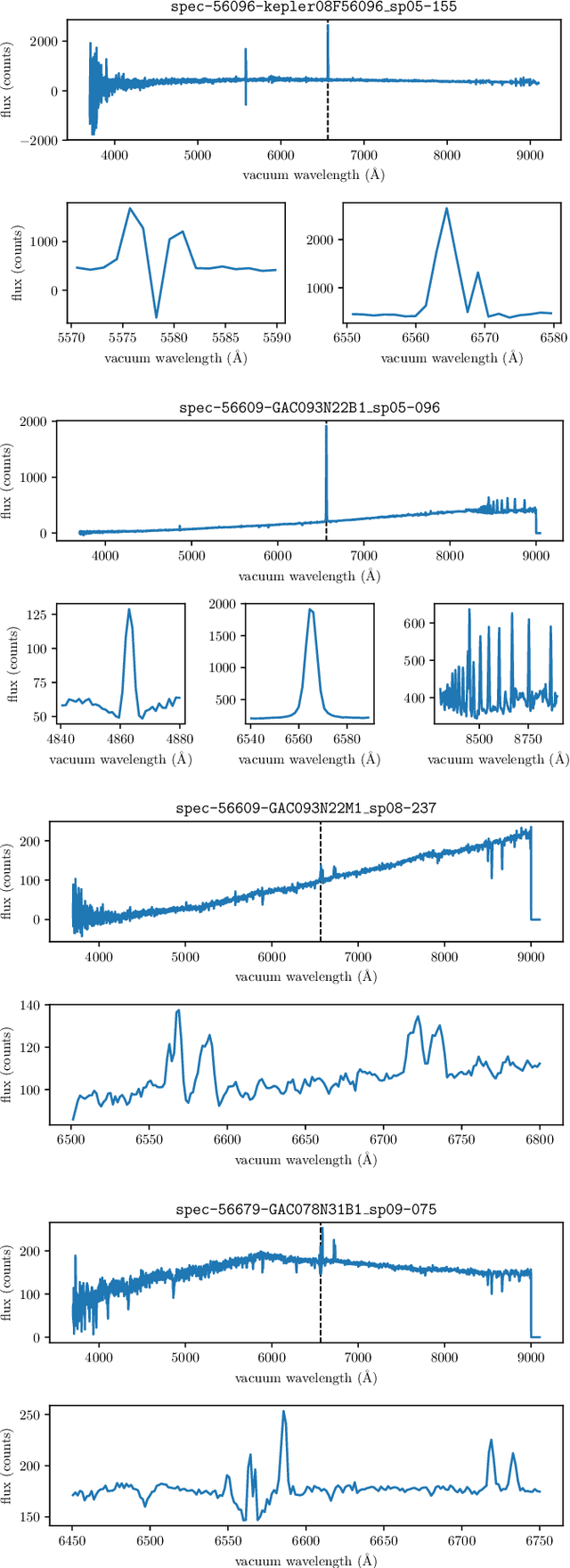Ondřej Podsztavek
Faculty of Information Technology of the Czech Technical University in Prague
Active deep learning method for the discovery of objects of interest in large spectroscopic surveys
Sep 07, 2020



Abstract:Current archives of the LAMOST telescope contain millions of pipeline-processed spectra that have probably never been seen by human eyes. Most of the rare objects with interesting physical properties, however, can only be identified by visual analysis of their characteristic spectral features. A proper combination of interactive visualisation with modern machine learning techniques opens new ways to discover such objects. We apply active learning classification supported by deep convolutional networks to automatically identify complex emission-line shapes in multi-million spectra archives. We used the pool-based uncertainty sampling active learning driven by a custom-designed deep convolutional neural network with 12 layers inspired by VGGNet, AlexNet, and ZFNet, but adapted for one-dimensional feature vectors. The unlabelled pool set is represented by 4.1 million spectra from the LAMOST DR2 survey. The initial training of the network was performed on a labelled set of about 13000 spectra obtained in the region around H$\alpha$ by the 2m Perek telescope of the Ond\v{r}ejov observatory, which mostly contains spectra of Be and related early-type stars. The differences between the Ond\v{r}ejov intermediate-resolution and the LAMOST low-resolution spectrographs were compensated for by Gaussian blurring. After several iterations, the network was able to successfully identify emission-line stars with an error smaller than 6.5%. Using the technology of the Virtual Observatory to visualise the results, we discovered 1013 spectra of 948 new candidates of emission-line objects in addition to 664 spectra of 549 objects that are listed in SIMBAD and 2644 spectra of 2291 objects identified in an earlier paper of a Chinese group led by Wen Hou. The most interesting objects with unusual spectral properties are discussed in detail.
 Add to Chrome
Add to Chrome Add to Firefox
Add to Firefox Add to Edge
Add to Edge